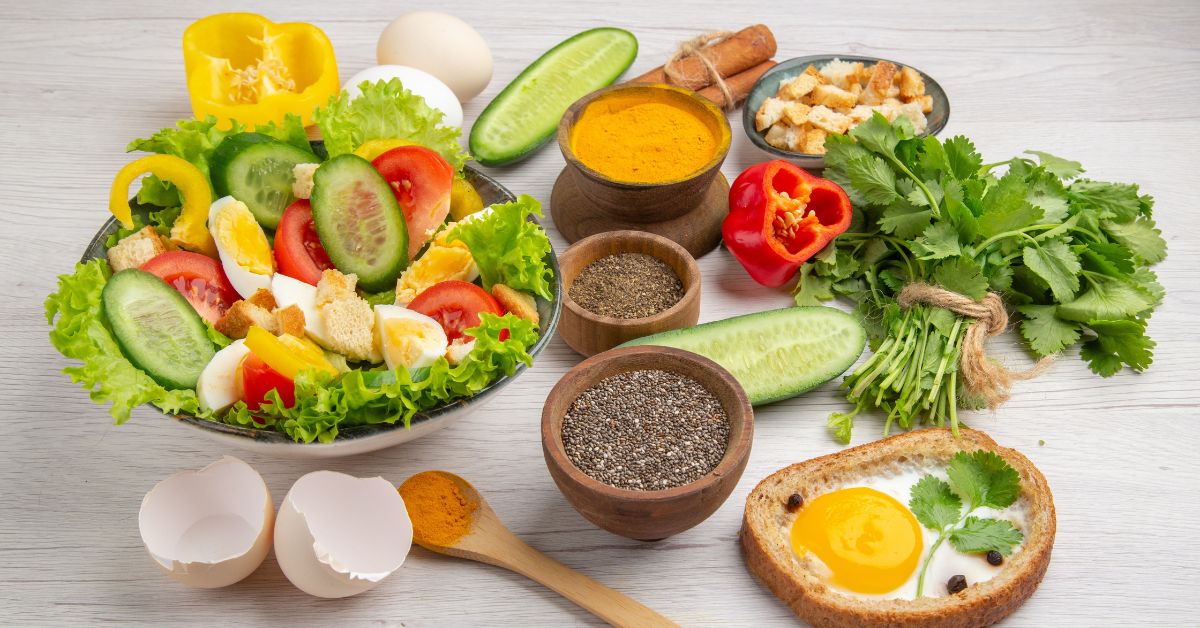What Are The Top 10 Cancer-Fighting Foods, Cancer, a complex and multifaceted disease, poses a significant global health challenge. While advancements in medical research have expanded our understanding of cancer and improved treatment modalities, the role of nutrition in cancer prevention and management has gained increasing attention. In this comprehensive exploration, we delve into the scientific underpinnings of the top 10 cancer-fighting foods, examining their bioactive compounds and mechanisms of action.

Broccoli and Cruciferous Vegetables:
Cruciferous vegetables, such as broccoli, cauliflower, and Brussels sprouts, are celebrated for their cancer-fighting prowess. Rich in glycosylates, these vegetables, when broken down, release bioactive compounds like sulforaphane. Sulforaphane has demonstrated potent anti-cancer properties by influencing various cellular processes, including detoxification, inflammation modulation, and apoptosis.
Berries:
Berries, including strawberries, blueberries, and raspberries, are hailed for their high antioxidant content, primarily attributed to polyphenols like anthocyanins and quercetin. These compounds exhibit anti-inflammatory and anti-cancer effects, protecting cells from oxidative stress and inhibiting the growth of cancerous cells.
Tomatoes:
Tomatoes owe their cancer-fighting potential to the presence of lycopene, a carotenoid with powerful antioxidant properties. Lycopene has been linked to a reduced risk of prostate, lung, and stomach cancers. Its ability to neutralize free radicals and modulate cell cycle progression underscores its significance in cancer prevention.
Garlic:
Garlic, a culinary staple, is renowned for its organosulfur compounds, including allicin. These compounds have demonstrated anti-cancer effects by impeding the proliferation of cancer cells, inducing apoptosis, and inhibiting angiogenesis. Additionally, garlic exhibits immune-boosting properties, further contributing to cancer prevention.
Leafy Greens:
Dark leafy greens like spinach, kale, and Swiss chard are rich in vitamins, minerals, and phytochemicals. The chlorophyll, carotenoids, and flavonoids found in these greens possess anti-cancer properties. These compounds contribute to cellular protection, detoxification, and immune system support, collectively reducing cancer risk.
Turmeric and Curcumin:
Turmeric, a golden spice, owes its vibrant color to curcumin, a bioactive compound with potent anti-inflammatory and anti-cancer properties. Curcumin modulates various signaling pathways involved in cancer development and progression. Its ability to target cancer cells while sparing normal cells makes it a promising candidate for cancer prevention and adjunctive treatment.
Green Tea:
Green tea, rich in polyphenols like catechins, has been extensively studied for its cancer preventive effects. Catechins, particularly epigallocatechin gallate (EGCG), exhibit anti-inflammatory, antioxidant, and anti-proliferative properties. Green tea consumption has been associated with a decreased risk of several cancers, including breast, prostate, and colorectal cancers.
Nuts and Seeds:
Nuts and seeds, such as almonds, walnuts, and flaxseeds, are nutritional powerhouses that provide essential fatty acids, fiber, and a spectrum of bioactive compounds. Omega-3 fatty acids in flaxseeds and walnuts, along with lignans in flaxseeds, contribute to their anti-cancer properties by influencing inflammation, hormone metabolism, and cell signaling.
Ginger:
Ginger, a spice with a long history of medicinal use, contains bioactive compounds like gingerol. These compounds exhibit anti-inflammatory, antioxidant, and anti-cancer effects. Ginger has shown promise in inhibiting the growth of cancer cells, inducing apoptosis, and suppressing angiogenesis, making it a valuable addition to a cancer-fighting diet.
Fatty Fish:
Fatty fish, such as salmon, mackerel, and sardines, are rich in omega-3 fatty acids, particularly eicosapentaenoic acid (EPA) and docosahexaenoic acid (DHA). These fatty acids have anti-inflammatory properties and play a role in regulating cell signaling pathways involved in cancer. Regular consumption of fatty fish is associated with a reduced risk of certain cancers, including colorectal and breast cancers.
Optimizing Cancer-Fighting Nutrition:
While the individual impact of these cancer-fighting foods is substantial, it is essential to emphasize the synergistic effects of a balanced and diverse diet. Incorporating a variety of these foods ensures a broader spectrum of bioactive compounds, each contributing to different aspects of cancer prevention and management.
Moreover, adopting healthy cooking methods, such as steaming and grilling, and minimizing the consumption of processed and red meats can further enhance the cancer-fighting potential of a diet rich in these foods.

Conclusion:
In conclusion, the top 10 cancer-fighting foods represent a natural and accessible approach to reducing cancer risk and supporting cancer management. Their diverse array of bioactive compounds, ranging from antioxidants and anti-inflammatory agents to apoptosis inducers, underscores the complexity of their anti-cancer mechanisms.
While dietary choices alone cannot guarantee immunity against cancer, they play a pivotal role in a comprehensive cancer prevention strategy. By embracing a varied and nutrient-dense diet that incorporates these cancer-fighting foods, individuals can empower themselves in the ongoing battle against this formidable disease.